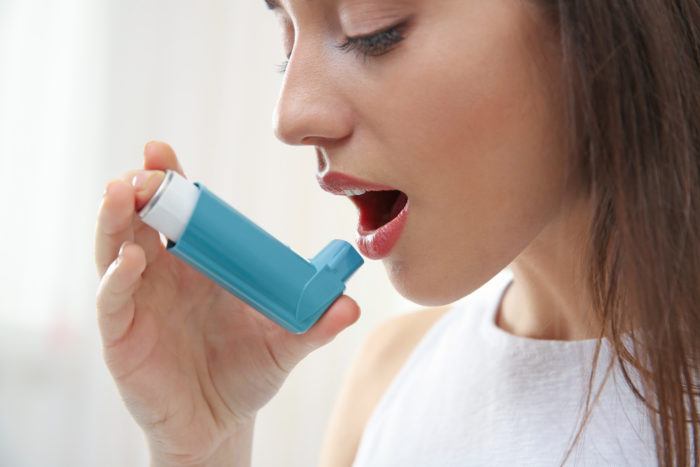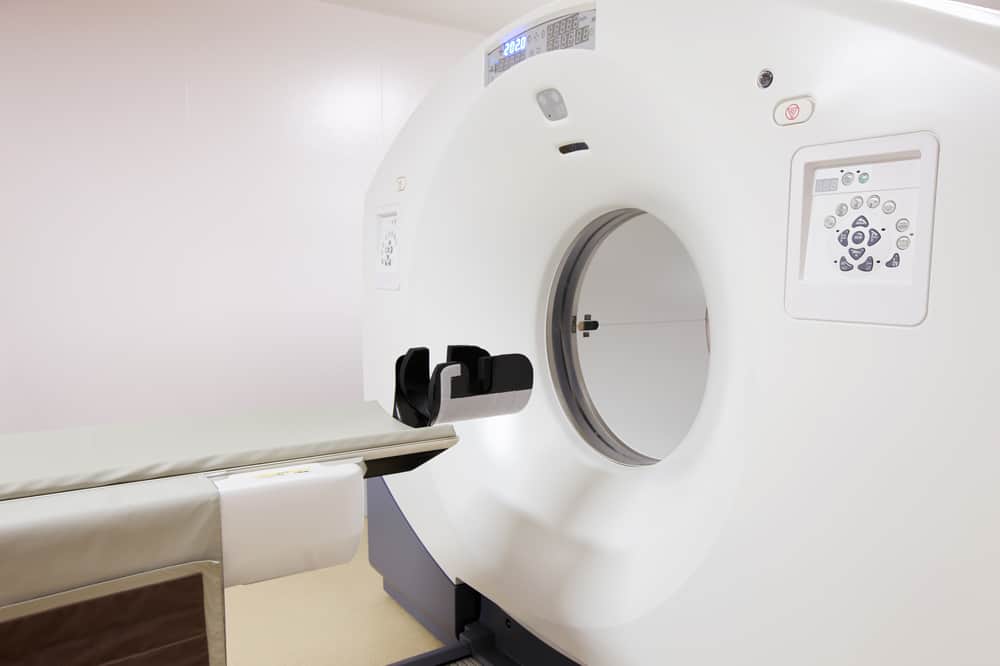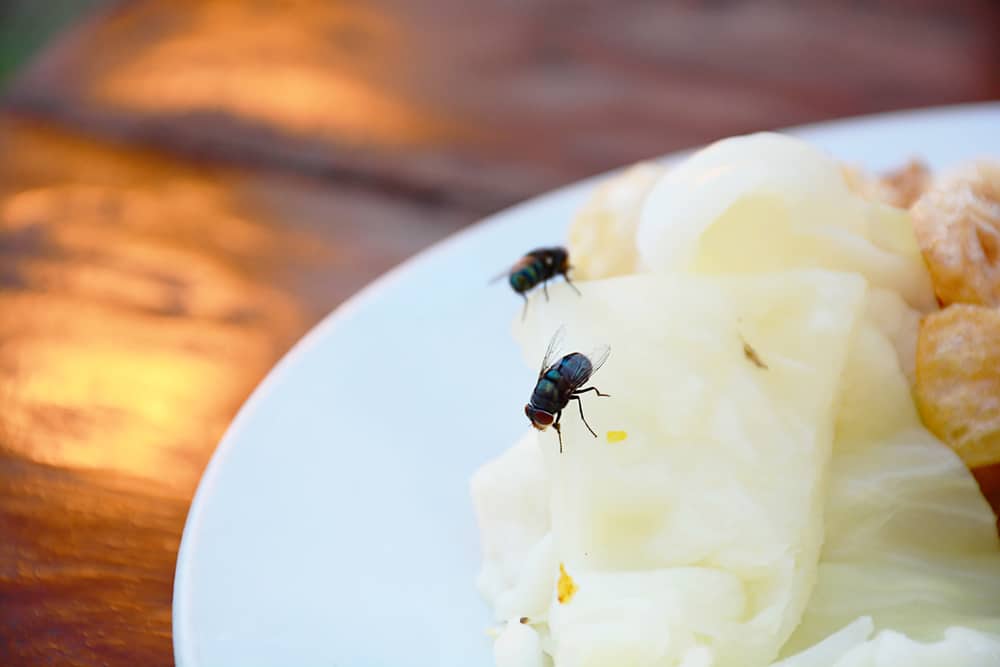Contents:
- Medical Video: First Aid For Asthma Attacks (1/3) - Mild attack
- Asthma has many types
- What causes asthma?
- Who is at risk of developing asthma?
- First aid step in asthma
- 1. Stay calm
- 2. Sit down
- 3. Avoid asthma triggers
- 4. Follow an asthma emergency plan
- 5. See the severity of asthma
- What are the first aid drugs in asthma?
- 1. Medicine
- 2. Bronchodilator devices
- 3. Inhaler
- How to prevent asthma relapse?
- 1. Use a peak flow meter
- 2. Avoid trees or gardens
- 3. Get used to breathing using your nose
- 4. Avoid cigarette smoke and dust
- 5. If you want to exercise, do it in a warm and humid environment
- 7. Routinely take medication as prescribed
Medical Video: First Aid For Asthma Attacks (1/3) - Mild attack
Asthma is one of the chronic respiratory diseases that is experienced by many people in the world. Quoting the Ministry of Health, the World Health Organization (WHO)reported that 300 million people in the world have asthma and the number continues to increase every year. Asthma can strike at any time. If not handled properly, asthma can take life. Check out to learn about first aid measures in asthma, which can be useful when you or the person closest to you experience it someday.
Asthma has many types

Asthma is a chronic respiratory disease caused by inflammation of the bronchi (airway). This inflammation causes the bronchi to swell and narrow, and produce excess mucus that makes it difficult for you to breathe.
Asthma symptoms are generally characterized by shortness of breath, wheezing (breath sounds "nagging), the chest feels tight and heavy, and coughing, especially at night. Asthma symptoms can appear regularly.
There are five common types of asthma, including:
1. Exercise-induced asthma
This type of asthma relapses when a person is exercising too intensely or has too much physical activity.
2. Nocturnal asthma
Nocturnal asthma is a symptom of asthma that appears at night. This condition is also caused by changes in the body's natural cycle at night.
3. Occupational asthma
Occupational asthma is a condition of asthma that occurs due to inhalation of vapors, gases, dust, or other particles in the workplace such as factories. Inhaled foreign substances can irritate the respiratory tract of the lungs and cause swelling.
4. Cough-variant asthma
This is a type of asthma whose main symptoms include dry coughing, aka coughing without phlegm and not slimy. People with these symptoms of asthma usually do not show other asthma symptoms such as wheezing, shortness of breath, and chest tightness.
5. Asthma caused by allergies
As the name suggests. This type of asthma occurs when triggered by allergies from something you eat, touch, or breathe. For example, debut allergies can cause you to sneeze and cough and continue until you have difficulty breathing.
What causes asthma?
The exact cause of asthma is unknown. The researchers suspect that heredity and the environment could be the main causes of asthma.
These factors include:
- A person's tendency to have allergies.
- There are parents or siblings who have asthma.
- Have had an upper respiratory tract infection(ARI) during childhood.
- Frequent contact with some allergens in the air or often exposed to viral infections during infancy or in early childhood. The child's immune system is not fully strong to fight infection.
Asthma attacks can also occur when the body is exposed to things that can cause the respiratory tract to become inflamed.
Each person's asthma triggers are different, not the same as one another.The trigger for asthma can be:
- Allergens from dust, animal hair, cockroach, mushrooms, and pollen from trees, grass, and flowers.
- Irritant like cigarette smoke, air pollution, chemicals or dust at work, compounds in home decoration products, and sprays (such as hairspray).
- Drugs such as aspirin or other nonsteroidal anti-inflammatory drugs and nonselective beta-blockers.
- Sulfite or chemical preservatives in food and drinks that are eaten.
- Upper respiratory viral infections, such as influenza.
- Doing heavy physical activity, including exercise.
Who is at risk of developing asthma?
Asthma is most common in children. But in fact all people of all ages, social strata, and gender may develop asthma.
Children are most susceptible to asthma.
- High risk of experiencing or having a history of respiratory infections.
- Children are at risk of allergies, for example skin allergies due to eczema.
- Born to parents who have asthma.
First aid step in asthma
When you or the person closest to you suddenly has an asthma attack, it is very important to know what first aid measures in asthma. This includes knowing when to contact a doctor or go to the emergency room at a nearby hospital to prevent an asthma attack getting worse.
But before contacting a doctor, menurut Everyday Health this is the first step to do:
1. Stay calm
According to Ruiz Huidoboro, an allergist (immunologist) fromAllergy and Asthma Healthcare in Missouri, USA, first aid measures in asthma will not be effective if you or someone else is panicked.Panic will actually make the body more stressful so you will have more difficulty breathing.
So once asthma attacks, keep calm. If you or the person is in the center of the crowd, try to slip into a rather quiet place.
2. Sit down
After being able to calm down, immediately sit as relaxed as possible while trying to catch your breath slowly. Try to take a deep breath with 10 beats and exhale slowly with the same count. Repeat repeatedly until your breath becomes regular.
You can also loosen clothes that are too tight so you can breathe more freely.
3. Avoid asthma triggers
If you or the person knows what triggers an asthma attack, avoid as much as possiblethe mic was right away. For example, if an asthma attack is triggered by cigarette smoke, immediately leave the area to look for fresh air or ask the smoker to immediately stop smoking and turn off the butts.
If asthma recurs after exercise or certain physical activities, for example, to go back and forth to lift heavy items, the sign is that your body is overwhelmed. So, immediately stop all activities that you do and rest. Sit or lie relaxed to catch your breath.
If you live together or have close relationships with people who have asthma, it's important to know what their asthma triggers are. That way, you can help them avoid or get rid of it so that the symptoms of asthma do not recur.
4. Follow an asthma emergency plan
People with chronic asthma should have an easy-to-reach asthma action plan record sheet. In it there is a number of information related to the list of symptom triggers, drugs used (inhalers, oral medications, nebulizers, etc.), to emergency first aid measures in asthma.
When you help people with asthma, read carefully their asthma plan to find out what steps to take next. Don't forget to read the drug label to determine the right dosage of the drug.
Also consider always carrying an inhaler, bronchodilator or other emergency breathing apparatus as first aid in asthma that can recur at any time.
5. See the severity of asthma
After your asthma attack has passed, try to recap what symptoms arise and how severe the attack is.
If other people who have asthma, it is also important for you as a helper to find out how severe their asthma is. This information will be useful to them when reporting their asthma attacks to the doctor.
The characteristics of an asthma attack that is already severe are:
- Bluish lip color.
- Short, long breaths.
- Talking difficult
- Asthma does not improve after using an inhaler or bronchodilator.
- Loss of consciousness.
If you or another person has a severe asthma attack like the one above, immediately call an ambulance (118) or go straight to the nearest hospital emergency room
Try to have a hospital emergency number for your subscription, slip it in your wallet or make it a speed dial on your cellphone.
Even if the symptoms have improved after getting first aid in asthma, you should still go to the doctor for further control.
What are the first aid drugs in asthma?
When your asthma or other people relapse, giving the right medicines can be very effective in preventing them from getting worse.
1. Medicine
Reporting from GetAsthmaHelp, here are some choices of first aid drugs in asthma that you can use:
- Anticholinergic drugs: This drug is a drug that functions to inhibit muscarinic cholinergic receptors and reduce vagal intrinsic sounds in the airways. While the content of Ipratropium bromide is useful to overcome the recurrence of asthma from moderate to severe levels.
- SABA (Short Acting Beta2 Agonist): Albuterol, Levalbuterol, and Pirbuterol are one of the bronchodilator drugs that can open and relax the respiratory tract (bronchi).
- Systemic corticosteroids: Although this drug is not a first aid drug in asthma, oral systemic corticosteroid drugs can be used for acute to moderate to severe attacks. Sometimes SABA drugs are also added to accelerate recovery and prevent the return of exacerbations.
2. Bronchodilator devices

Bronchodilators are one of the first aid tools in an asthma attack. Bronchodilators function to open the blocked airway due to recurrence of asthma.The bronchodilator effect works instantly within minutes after inhalation and lasts up to 2-4 hours later.
Bronchodilators are commonly used before exercise to prevent asthma triggered by exercise. This tool can also be used as a liquid medicine that is included in the nebulizer to treat asthma attacks at home.
This first aid tool for asthma can also cause side effects such as:
- Trembling and becoming nervous
- The heartbeat is fast
- Stomach ache
- Insomnia
- Muscle aches or cramps
If you have to use an inhaler, tablet or liquid bronchodilator, that means you have severe asthma. Check with your doctor regularly every few weeks.
3. Inhaler
Inhaler is one of the first aid tools in relapsing asthma. There are two types of inhalers, namelyinhaler reliever and controller inhaler which contains corticosteroids.
Inhaler reliever is an asthma medication containing albuterol or salbutamol. An inhaler reliever is also often called with ventolin inhalers. The color of the inhaler is blue. Ventolin inhalers can work quickly in less than 15 minutes to stop an asthma attack. This type of inhaler is very effective as a medication to relieve mild to severe asthma attacks.
Inhaler controller is an inhaler that contains corticosteroids to reduce inflammation in the airways. This first aid tool in asthma is usually brown, red or orange.This type of inhaler has a long working effect so it can be routinely used daily. The controller is used to prevent asthma recurrence, reduce symptoms severity, increase your control of asthma symptoms, up toreduce your need to go back and forth consulting the hospital.
How to prevent asthma relapse?
1. Use a peak flow meter

Peak flow meter is a tool to measure the amount of air flow in the airway. Experts and doctors often recommend people with asthma using this tool as one way to control asthma.
How to use a peak flow meter is by breathe in breath as usual then exhale into the cavity of this tool. You can read the instructions to find out the meaning of your latest lung movements and functions. The highest number coming out of peak flow meter is a good respiratory function value.
When you are first diagnosed with asthma, your doctor may ask you to use it peak flow meter every day for 2-3 weeks.Most asthma action plans are based on reading peak flow You. Based on these readings, you will be able to know what fast actions to take to deal with your asthma.
2. Avoid trees or gardens
Dust and pollen attached to common trees is a factor in recurrence of asthma. Research revealed by the Annals of Allergy, Asthma and Imunnology, reveals that pollen triggers causes of asthma with sinuses in almost more than 70% of cases of recurrent asthma.
Dr. Katina Nicolacakis from Twinsburg Family Heart Center say, besides pollen on plants or trees, there are also many chemicals that come out when wood is cut. Wood will release the powder and remove oil. When inhaled by asthmatics, it can trigger a recurrence of an asthma reaction.
3. Get used to breathing using your nose
When exercising or strenuous activities, such as climbing stairs, for example, you might unconsciously pull and exhale through your mouth. However, this method can actually trigger asthma to recur.
Mouth tdo not have hairs and sinus cavities such as the nose that helps moisturize the incoming air. Dry and cold air that enters the lungs will trigger airway constriction so you have difficulty breathing smoothly.
By familiarizing yourself with breathing through your nose, you will keep the air inhaled warm and moist so as to avoid the recurrence of asthma.
4. Avoid cigarette smoke and dust
Lots of cigarette smoke and dust scattered around you. if you have asthma, it's best to avoid both of these. As is known, if cigarette smoke and dust is one of the factors causing the highest asthma. Also make sure your home or office has good ventilation for air exchange. Because if there is smoke or dust in the house, this will make it easier for them to get carried away by the wind.
5. If you want to exercise, do it in a warm and humid environment
Dry and cold air will trigger the airways to narrow so you have difficulty breathing. Then syou should avoid exercising outside in cold weather. When the weather is cold, exercise in a warmer room.
Another thing you can do is change the form of exercise you are doing so you can practice in a warm and humid place. For example, you can choose to swim in a more humid environment. 6. Flu shots
You can try regular flu vaccines per year to prevent asthma recurrence. Why do flu shots? Because asthma can recur due to a virus that enters the respiratory tract (usually a virus) influenza).
It doesn't hurt to ask your doctor for flu vaccines to prevent asthma. Because the injection can protect you from the dangers of flu which can increase the risk of susceptibility to asthma. Also avoid conditions that cause fatigue, such as excessive laugh daily. Maintain conditions that are not prone to respiratory infections such as influenza.
7. Routinely take medication as prescribed
Even though your asthma symptoms begin to improve, try to keep taking regular medication and don't stop or change the dose without the doctor's knowledge.
It's best to take your medication to each doctor's visit, every work, or even when you leave the house just in case you deal with symptoms that can recur at any time.













